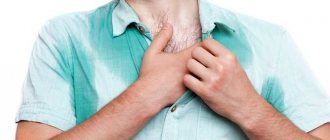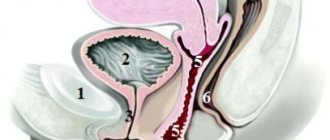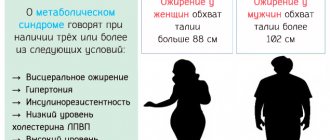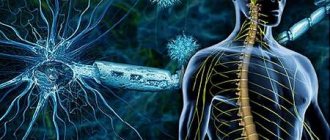Description of the disease
Leptospirosis (Vasilev-Weil disease) is a type of bacterial infection spread by animals. It is caused by a strain of bacteria called Leptospira.
Leptospirosis is a zoonotic disease, meaning it is spread to humans from animals.
You can become infected with leptospirosis by touching soil or water contaminated with the urine of wild animals infected with the Leptospira bacteria.
Animals known to carry Leptospira bacteria include:
- cows;
- pigs;
- dogs;
- rodents, especially rats.
Once an animal is infected, the bacteria remains in their urine for the rest of their life. Most animals show no symptoms, but up to 1 in 10 infected dogs die from the disease.
Person-to-person transmission through sex is possible but very rare.
Is leptospirosis contagious? What is the infectious period for leptospirosis?
In general, leptospirosis is considered to be mildly contagious. Like other animals, humans can spread leptospirosis in their urine during and after illness. Therefore, people exposed to urine from infected people may become infected. Although the bacteria is not airborne and has a low risk of being found in saliva, people who have wet bedding or blood-soaked material from an infected person may increase the chance of infection. There are a few reports of transmission between sexual partners, but the incidence of this type of transmission appears to be very low. Unfortunately, pregnant mothers who get leptospirosis can also infect their fetus.
The contagious period of leptospirosis depends on how long viable organisms remain in the urine. Most people will shed organisms in their urine within a few weeks, but there are reports that people may continue to shed organisms in their urine for up to 11 months. Some experts believe there is a risk within 12 months of the onset of the primary infection.
Types of leptospirosis
There are two main types of leptospirosis infection (mild (acute) and severe):
- With mild leptospirosis, a person develops flu-like symptoms such as headache, chills and muscle pain.
- In severe leptospirosis, a person develops severe, sometimes life-threatening symptoms, including organ failure and internal bleeding. It is caused by bacteria infecting major organs such as the liver and kidneys.
Mild leptospirosis is the most common type of disease, accounting for 90% of cases. It is not clear why some people develop severe symptoms.
Risk factors for developing severe leptospirosis include:
- children under five years of age;
- adults over 65 years of age;
- already have a serious illness such as pneumonia.
How common is leptospirosis?
Leptospirosis is most common in tropical areas of the world. However, it is becoming increasingly common in urban areas with poor sanitation, such as impoverished areas of large cities in developing countries.
Most cases of leptospirosis are sporadic (one-off), although large outbreaks have been reported since the flood.
It is estimated that 10 million people worldwide become ill with leptospirosis every year. It is difficult to determine exactly how many people die from leptospirosis because many cases occur in parts of the developing world where causes of death are not routinely reported.
The number of cases of leptospirosis is expected to continue to increase in the coming years as a result of global warming and an expected increase in flooding. Some experts estimate that the mortality rate from leptospirosis may range from 5 to 25%. Mortality rates from leptospirosis tend to be higher in countries where access to quality health care is limited.
How to protect your dog from leptospirosis
Despite the danger of the disease, infection is successfully prevented. To do this, just follow a few simple rules:
- The most important preventive measure is annual vaccination against leptospirosis in dogs with domestic or foreign mono- or polyvaccines (the most common: Biovac-L, Leptodog, Biovac-DPAL, Dipentavak, Biorabik, Leptorabisin, Vanguard-7, Multikan-6, Hexakanivac, Hexadog).
- Strictly prohibit your pet from drinking from puddles and other natural bodies of standing water while walking.
- Avoid contact between domestic dogs and street dogs.
- Follow sanitary and hygienic rules for keeping pets.
- Inspect your pet's body after a walk for possible ticks.
- When caring for a sick/recovered pet, use personal protective equipment - separate overalls, rubber gloves, and in some cases a gauze bandage on the face.
- Timely treatment against blood-sucking insects (ticks and fleas) and helminths is mandatory.
ul
Symptoms
Symptoms of leptospirosis in humans usually develop suddenly 7 to 14 days after exposure to Leptospira bacteria.
However, signs may develop 3-30 days after exposure.
Mild leptospirosis
Symptoms of mild leptospirosis in humans include:
- high temperature (fever), which is usually between 38 and 40°C (100.4 and 104°F)
- chills;
- sudden headaches;
- nausea;
- vomiting;
- loss of appetite;
- diarrhea;
- cough;
- a sore throat;
- non-itchy skin pain;
- muscle pain, especially affecting the muscles of the calves and lower back;
- conjunctivitis (irritation and redness of the eyes).
Symptoms of mild leptospirosis usually resolve within 5-7 days. However, a small number of people will experience a further phase of more severe symptoms known as severe leptospirosis.
Severe leptospirosis
Symptoms of severe leptospirosis develop 1-3 days after the symptoms of mild leptospirosis have passed.
The nature of the symptoms is usually divided into one of three groups, depending on which organs are infected:
- liver, kidneys and heart (this type of infection is known as Weil's disease)
- brain;
- lungs.
In rare cases, it is possible to experience all three groups of symptoms at the same time.
Liver, kidneys and heart
If these organs become infected, you are likely to experience the following symptoms:
- jaundice (yellowing of the skin and whites of the eyes);
- lack of appetite;
- fatigue;
- shortness of breath;
- swollen ankles, feet, or hands;
- weight loss;
- muscle pain;
- nausea;
- nosebleeds;
- noticeable, painful swelling of the liver;
- decreased amount of urine;
- chest pain;
- fast and irregular heartbeat.
If left untreated, the kidneys may become unable to function. This condition is known as kidney failure and it can be fatal.
Brain
There are two ways to infect the brain:
- the outer layer of the brain becomes infected (meningitis);
- brain tissue becomes infected (encephalitis).
Both types of brain infection cause similar symptoms, including:
- high temperature of 38°C (100.4°F) or higher;
- nausea;
- vomiting;
- changes in mental status such as confusion, drowsiness, or disorientation;
- convulsions (fits);
- aversion to bright lights (photophobia);
- inability to speak;
- inability to control physical movements;
- neck stiffness;
- a spotty red rash that doesn't fade or change color when you put a glass on it;
- uncharacteristic behavior, such as unusual aggression.
If left untreated, the infection can lead to brain damage, coma, and death.
Lungs
Leptospirosis infection that spreads to the lungs is the most serious health threat because it carries a significant risk of death. This is because the bacteria damage lung tissue, which can lead to massive internal bleeding and loss of lung function, which can be fatal.
Symptoms include:
- high temperature, which can reach 40.5°C (105°F);
- shortness of breath;
- coughing up blood (sometimes the amount of blood is so large that a person can choke on it).
How and with what to treat
Leptospirosis is a life-threatening disease, so entrust treatment to specialists in a hospital setting. If you live in an area unfavorable for the disease, are fond of hunting, or travel with a pet, take care of yourself and get vaccinated.
In the first days of the disease, the dog can be given medications intramuscularly or subcutaneously. In the future, local blood circulation is impaired and medications from the injection sites will be poorly absorbed into the blood. Therefore, intravenous drip administration of drugs is preferred. Leptospira live in the renal tubules, which are poorly supplied with blood. Therefore, antibiotic therapy does not always lead to the expected result.
The therapeutic strategy for the treatment of leptospirosis in dogs is developing in the following areas:
- Destruction of the pathogen. In the first days of the disease, hyperimmune serum is administered for 3 days in a row. At the first stage, long-acting antibiotics of the cephalosporin or penicillin series are effective. If the disease has transformed into a chronic form, treatment is continued with other antiseptics. Tetracyclines destroy Leptospira, however, they are characterized by side effects - they interfere with the restoration of local blood flow. Bicillin 3 or 5 injections, practiced in previous years, are ineffective due to impaired local circulation. At the same time, immunocorrectors are administered - Polyoxidonium, Lykopid, Ribotan, Gamavit.
For leptospirosis, intravenous administration of medications is indicated. - Fight dehydration. The onset of the disease is characterized by thirst. Subsequently, debilitating vomiting develops. The dog swallows the water and immediately vomits it. In order for the animal to drink, regurgitation is stopped by parenteral administration of Metoclopomide (Cerucal). Osmoprotective salts are administered dropwise:
- Ringer-Locke solution with glucose;
- Reopoliglyukin;
- Lactosol.
Hemodez;
When the dog is able to drink, diarrhea is stopped by oral administration of sorbents - Enterosgel, Smecta, Polyphepam.
Hill's k/d veterinary food is prescribed to animals with kidney and heart disease.
They contain protein hydrolysates and dried chicken eggs. They are distinguished by a low concentration of complete, easily digestible proteins and high calorie content. One jar contains a daily portion for a pet weighing 30 kg. Please note that once opened, canned food must be fed within 36 hours or less. If you have a small dog, buy Hills k/d granules and soak them for the first time. The duration of diet therapy is determined by the doctor. A 370 g can of canned food costs 261 rubles, a 2 kg package of dry granules costs 1517 rubles.
Causes and risk factors
Leptospirosis is caused by a strain of bacteria called Leptospira, which is found in some animals, including:
- mice;
- rats;
- pigs;
- cattle;
- horses;
- dogs;
- sheep;
- bats;
- raccoons
The bacteria live in the animal's kidneys and can end up in their urine. Bacteria introduced into soil or water can survive for weeks or even months.
You can become infected with Leptospira bacteria by drinking contaminated water, or if contaminated water or soil gets into your eyes, mouth, nose, or cuts on the skin. Less commonly, the infection can be transmitted to people who come into close physical contact with the blood of an infected animal.
Cases of leptospirosis in humans are rare, but occasional outbreaks can occur, especially during events that involve close contact with infected water sources, such as swimming in freshwater. A person can also become infected after a natural disaster such as a flood.
Person-to-person transmission is rare, but is thought to occur during sexual intercourse or when an infected mother passes the infection to her baby while breastfeeding.
Geographic risk factors
Leptospirosis occurs throughout the world, including Western Europe, but is most common in tropical and subtropical areas. This is because Leptospira bacteria are able to survive longest in hot and humid conditions. Countries and regions where leptospirosis is most common include:
- India;
- China;
- South of Russia;
- Southeast Asia;
- Africa;
- parts of Australia;
- Central America;
- parts of South America (especially Brazil);
- Caribs.
Popular tourist destinations with higher than average rates of leptospirosis include:
- Hawaii;
- Thailand;
- Jamaica;
- Barbados;
- Australia;
- New Zealand.
If traveling to these parts of the world, there are certain factors that may put you in contact with contaminated water or soil and may put you at a slightly higher risk of contracting leptospirosis. For example:
- swimming, especially if you immerse your head under water for a long time;
- sailing;
- rafting;
- rural camping;
- speleology;
- rowing;
- bike trails;
- walking barefoot.
In areas of the developing world where flash floods occur, outbreaks of leptospirosis have occurred. This is because previously clean sources of drinking water are becoming contaminated.
Occupational risk factors
There are several occupations that increase the risk of contracting leptospirosis. However, this risk is only significant if you work in the following professions:
- farmers, especially those keeping pigs and cattle;
- sewer workers;
- people who regularly work with animals, such as veterinarians;
- freshwater fishermen;
- people who work with dead animals, such as butchers or slaughterhouses (a slaughterhouse is a place where animals are killed for their meat).
What dog owners need to know about leptospirosis
- The disease is caused by a special type of bacteria - leptospira, which is very resistant to adverse factors in the environment, and also spreads quickly and widely.
- The disease is often fatal. The causes of death were severe heart, liver and kidney failure. In most cases, veterinarians suggest euthanizing the animal if this diagnosis is suspected. Even if the dog can be cured, bacterial carriage and release of spirochetes into the environment can last for several years (up to 4). Also, in most cases complications develop.
- The incidence of diseases is observed in the period from May to November, when the weather is hot, humid and there are sources of standing water (dogs should not be allowed to drink from a puddle!). But isolated cases can be recorded throughout the year.
- Breeds with a loose build are especially susceptible to the disease: basset hounds,
- French and English bulldogs,
- lap dogs,
- bullmastiffs,
- boxers,
- Mastino Neapolitan,
- bloodhounds.
- With hemorrhagic manifestations, there is an admixture of blood in the stool, vomit, saliva, etc.
ul
Diagnostics
Mild leptospirosis is difficult to diagnose when it is in the acute (early) stage because the symptoms are similar to many other more common infections, such as the flu.
Additionally, many of the tests commonly used to investigate flu symptoms are not very effective at diagnosing leptospirosis.
Therefore, a diagnosis of the disease is usually only considered if the patient experiences symptoms of severe leptospirosis.
Successful diagnosis usually requires a detailed personal history of the patient. You should tell your doctor if you:
- have recently traveled to parts of the world where leptospirosis is widespread;
- have recently been exposed to a fresh water source such as a river, lake, sewer or pond;
- have an occupation that involves exposure to animal urine or animal blood, such as farming, animal care (veterinary care) or working in a slaughterhouse.
A diagnosis of leptospirosis can be confirmed by performing a series of blood and urine tests to detect the presence of Leptospira bacteria in the blood or urine.
What dog diseases have vaccines been developed for?
There are many manufacturers, and therefore vaccines, but they are developed only for a number of canine diseases:
- Plague of carnivores;
- Rhinotracheitis;
- Viral enteritis;
- Parainfluenza;
- Hepatitis;
- Leptospirosis;
- Rabies;
- Lyme disease;
- Microsporia, trichophytosis;
- Giardiasis.
Dogs must be vaccinated against canine distemper, enteritis, hepatitis, parainfluenza, leptospirosis and rabies. Other vaccinations can be recommended by a veterinarian if the animal lives in an area unfavorable for the disease; the rules for vaccinating dogs are described here
There are no vaccines against piroplasmosis (a disease carried by ticks), or Aujeszky's disease (pseudo-rabies), or other diseases.
Treatment
Acute leptospirosis
Most cases of acute leptospirosis can be successfully treated with a five to seven day course of antibiotics. A tetracycline antibiotic called doxycycline is the preferred choice.
Side effects of doxycycline include:
- headache;
- runny nose;
- stomach upset;
- diarrhea.
These side effects should go away after completing the course of antibiotics. An alternative antibiotic such as erythromycin .
Side effects of erythromycin include:
- nausea;
- abdominal pain;
- vomiting;
- diarrhea.
It is very important to complete the prescribed course of antibiotics, even if you feel better. This is because stopping treatment before all bacteria has been killed may cause a more serious infection to return.
pain relievers such as paracetamol or ibuprofen can be used to relieve symptoms such as headache, fever and muscle pain.
Seek medical advice if, despite treatment, symptoms do not improve after 7 days.
Severe leptospirosis
Almost all cases of severe leptospirosis will require hospitalization. The underlying infection will be treated with intravenous antibiotics (antibiotics that are given directly into the bloodstream).
If you have experienced organ damage, additional equipment may be needed to support organ function. For example:
- artificial ventilation (MV) to help breathing;
- dialysis, where kidney function is artificially replicated by removing waste from the blood;
- intravenous fluids to restore fluids and nutrients to the body.
The amount of time that will need to be spent in hospital will depend on how well the patient responds to antibiotics and the extent of any organ damage. Some people may feel well enough to leave the hospital within a few weeks, while others may require several months of hospital treatment.
Leptospirosis and pregnancy
The course of leptospirosis infection during pregnancy and its consequences for the child can be extremely unpredictable.
In some cases, the infection can spread to the unborn baby, leading to the death of the baby and miscarriage or stillbirth. In other cases, the infection does not affect the baby and the pregnancy proceeds normally.
If symptoms of leptospirosis appear during pregnancy (even mild ones), the patient may be hospitalized so that her health and the health of the baby can be carefully monitored.
A person gets leptospirosis from a pet
To avoid becoming infected with leptospirosis from your pet, you must:
- It is imperative to disinfect the apartment where the dog was with 3% chloramine-B (disinfectant solution), followed by connecting an ultraviolet lamp throughout the premises for at least 30 minutes (if the diagnosis has been confirmed);
- it is necessary to completely limit children’s contact with a sick pet;
- You should not allow an animal to jump on you or allow you to lick your hands or face;
- any manipulations with the dog during treatment (until tests are obtained that the animal is healthy) should be carried out in personal protective equipment (rubber gloves), excluding any contact with infected secretions (the main source of infection is urine, and into the body human spirochetes penetrate through damage to the skin and mucous membranes);
- Make sure that the dog does not relieve itself in the apartment. To do this, you need to walk your pet in a timely manner and/or quickly respond to the dog’s “requests” for extracurricular urges. In case of involuntary urination due to illness, the area must be washed and treated with a 3% or 2% chlorine solution and always wear rubber gloves;
- Regardless of the availability of personal protective equipment, after contact with a sick dog or after cleaning up feces, be sure to wash your hands in warm water with laundry soap up to your elbows;
- If a pet dog has been diagnosed with leptospirosis, it is mandatory to take a blood test for the presence of the disease to all family members who have had regular contact with the pet, so that if detected, treatment can begin as early as possible.
ul
Complications
Without treatment, the disease can cause a number of complications:
- acute liver failure such as hepatic coma;
- acute renal failure;
- bleeding;
- damage to the membranes of the eyes;
- myocarditis;
- paralysis, paresis;
- infectious-toxic shock.
Prevention
If you are traveling to parts of the world where leptospirosis is common, you should limit your exposure to water. If you cannot avoid contact with fresh water sources such as rivers, ponds or lakes, you should ensure that you wear appropriate protective clothing.
You should also only drink sealed bottled water or fresh boiled water. Always cover any cuts or abrasions with waterproof bandages and clean any wounds as soon as possible.
Try to minimize exposure to animal urine by avoiding areas where animals may urinate, such as bedding and litter trays. If you suspect you have been exposed to animal urine, clean the affected area of skin as soon as possible.
Never touch a dead animal with your bare hands.
Antibiotic prophylaxis
Antibiotic prophylaxis is when you take antibiotics as a precaution against infection. However, there is limited evidence of the effectiveness of antibiotic prophylaxis for leptospirosis, so it is usually used only in exceptional cases, such as:
- for emergency workers working in disaster areas where there is a known outbreak of leptospirosis cases;
- for soldiers serving in areas with high rates of leptospirosis;
- for animals infected with animals known to carry Leptospira bacteria.
Epizootology of the disease
The causative agent of the disease is a bacillus of the genus Leptospira, the reservoir and source of which are the “residents” of natural foci:
- small rodents;
- predators;
- animals with a latent asymptomatic form;
- carriers of leptospirosis;
- insectivores;
Economic outbreaks are formed when sick or sick animals are imported. Otherwise, these foci are called anthropourgic.
Isolation of the rod from the body occurs with the release of:
- urine;
- sperm;
- milk;
- feces;
- exhaled air;
- various discharges from the genital organs.
Leptospirosis in animals can be a consequence of:
- receiving water from standing sources;
- contact with contaminated soil, litter, infected rodent;
- eating food “from the same plate” with infected animals, contact with them;
- skin damage;
- intrauterine infection.
Isolated cases of the disease can occur in any season of the year, but animals get sick en masse in the summer - the optimal temperature for the development of Leptospira is 29°C, and some strains grow successfully at 13 degrees Celsius. Temperatures higher or lower are destructive for these sticks. The bacteria lives especially comfortably in a humid environment, up to 200 days, but in a dry environment it dies after 12 hours.
ul











